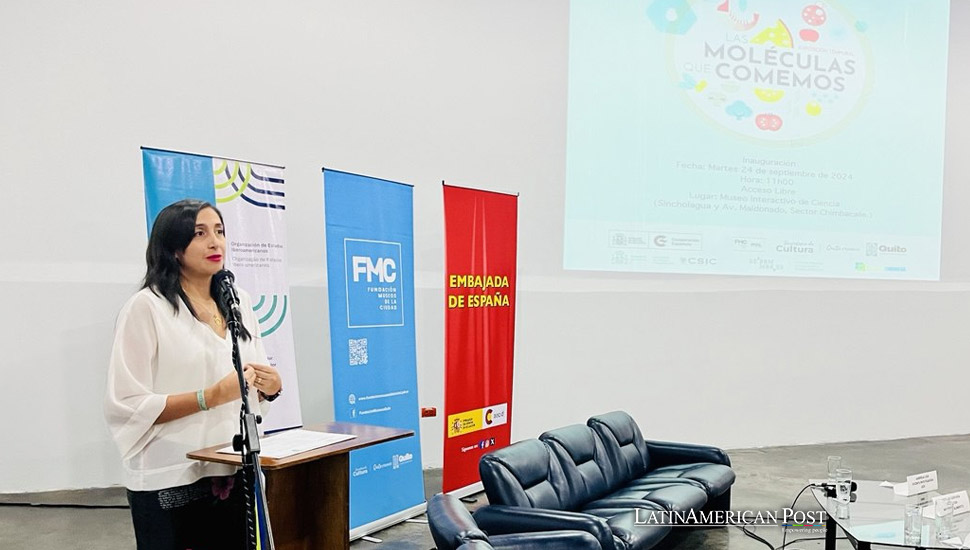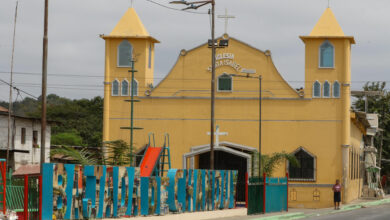Technological and Scientific Breakthroughs in Food Explored in Ecuador Exhibition

The interactive exhibit ‘Las moléculas que comemos,’ now open in Quito, Ecuador, highlights the scientific and technological advancements in food, nutrition, and safety. Through 20 panels, it demonstrates how understanding the molecular composition of food can enhance health and transform how we eat.
Exploring the Molecular Makeup of Food Through Science
The exhibit ‘Las moléculas que comemos’ at the Museo Interactivo de Ciencia (MIC) in Quito introduces visitors to the scientific processes involved in food digestion and nutrition. Developed by the Spanish Society of Biochemistry and Molecular Biology (SEBBM) and the Spanish National Research Council (CSIC), the exhibition sheds light on the deep connection between our senses—such as smell and taste—and the foods we consume.
With a collection of 20 informative panels, the exhibit uses cutting-edge research to show how food interacts with our bodies on a molecular level. This interaction is vital to our overall well-being, as the nutrients from food can either enhance or diminish our health. The exhibit not only delves into the biological processes of metabolization but also explains how modern science rethinks food, offering insights far beyond culinary pleasure. It underscores that food is not merely about satisfying hunger—it’s a crucial factor in health.
Qualification and Spherification Unveiled
One of the exhibit’s highlights is the introduction of groundbreaking food preparation techniques like gelification and spherification. These advanced methods, traditionally used in avant-garde cuisine, are showcased as part of a more significant trend of blending science with culinary arts. As the exhibit points out, kitchens have evolved into “laboratories of flavor,” where complex chemical reactions like caramelization and fermentation occur. While familiar to chefs, these processes are now made accessible to the public in a scientific context.
The technological innovations in food preparation, including these modern techniques, have shifted our understanding of how food can be transformed and presented. Gelification, for example, creates a smooth texture by turning liquids into gels. At the same time, spherification allows liquids to take on the appearance of small spheres, enhancing both the visual appeal and sensory experience of food. These innovations excite food enthusiasts and play a significant role in food science, offering new ways to preserve nutrients and enhance flavor.
Scientific Research in Food Safety and Nutritional Health
The exhibit also emphasizes the role of scientific research in ensuring food safety and nutritional health. Through the work of CSIC, several advancements in food technology are presented, including the development of biodegradable packaging that extends food’s shelf life and hydrolyzed egg whites that offer new possibilities in nutrition.
A key focus is on understanding ultra-processed foods and their impact on health. By exploring why these foods are so appealing and how they affect the body, the exhibit encourages visitors to rethink their food choices. Nutritional science is framed as an essential tool for preventing diseases such as diabetes, obesity, and cardiovascular conditions. The exhibit highlights how a balanced diet enriched with nutrients can significantly reduce the risk of these widespread health issues.
Another essential aspect of the exhibit is the dismantling of common food myths. For example, misconceptions about chocolate, honey, and gluten are explored, and the public is provided with scientifically backed information about these popular foods. This promotes a deeper understanding of what we consume daily.
Cultural Spaces as Agents of Change for Better Nutrition
At the exhibit’s inauguration, prominent figures such as Spanish Ambassador to Ecuador Enrique Yturriaga and CSIC scientist Rocío De Iriarte spoke on the broader impact of cultural institutions in shaping public health knowledge. Yturriaga emphasized that eating well is about indulging in delicious flavors and understanding the science behind food and its role in promoting health.
De Iriarte, a science communicator and vice director of the National Museum of Natural Sciences in Madrid, discussed the potential for cultural spaces like museums to influence social change. She highlighted that museums can foster critical thinking and offer solutions to societal problems, mainly through informal education, beyond the traditional classroom setting.
Also read: Rare New Discoveries of Albinism in Ecuador’s Wildlife and Beyond
Through exhibits like ‘Las moléculas que comemos,’ these spaces can actively engage the public in conversations about nutrition, encouraging healthier food choices and an informed understanding of how food interacts with our bodies on a biological level. This approach underscores the vital role of education in driving improvements in public health.
By blending the latest scientific findings with interactive exhibits, ‘Las moléculas que comemos’ invites visitors to explore the intersection of food, technology, and health, making it a must-see attraction for anyone interested in the future of nutrition.




